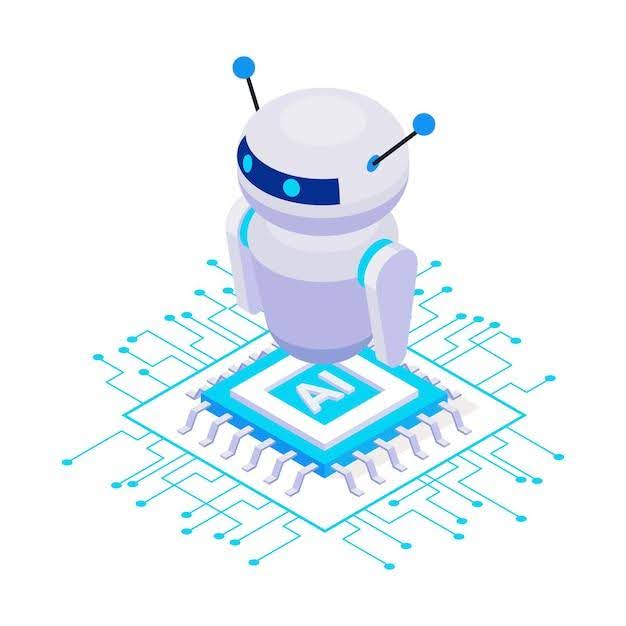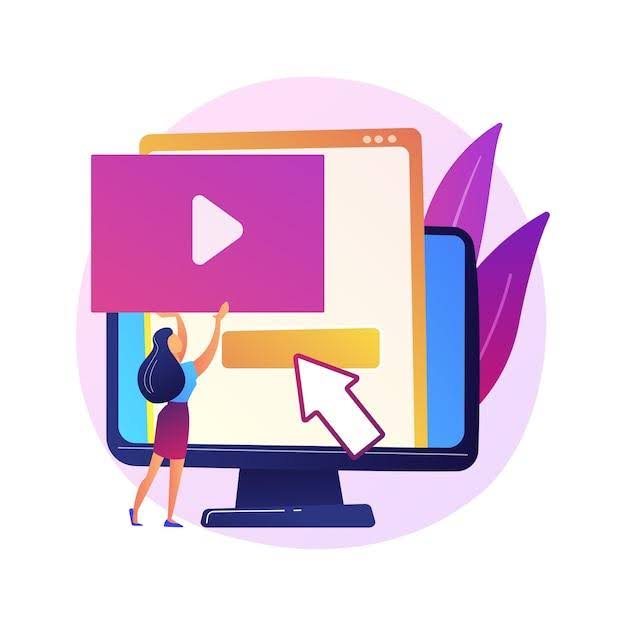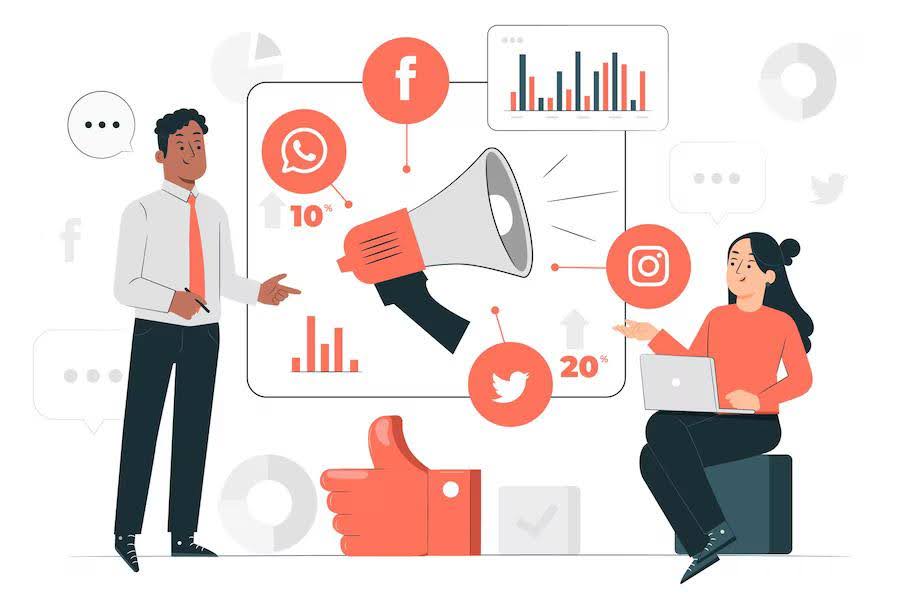Published on: 01 Dec 2020
Reading time: 9 minutes
What is Programmatic Advertising?
BCG projected programmatic media buying and selling to reach $43 billion by 2020. Essentially, programmatic has become the bread & butter of the digital marketing media distribution businesses as the projected market value represents nearly 60% of the digital advertising markets.
Not long ago, advertising agencies were the primary brokers between 'media-spot sellers' and brands. Agencies would generally charge a 15%-20% commission on helping brands acquire the right media-spots in print, radio, television, and outdoor to suit the brand's targeting needs.
As Google connected many ad inventories, it became easier to streamline the media buying process in the digital marketing space. Programmatic advertising is an automated approach to buying media-spots for showcasing your ads as a brand or agency on a publishing website. It helps the media buyers better understand the traffic, target specific users, and reduce the lead-time generally spent in buying media-spots. For publishers, this is an effective way to monetize their traffic that can now be used as the audience for certain brands and advertisers.
Programmatic is executed on Demand-Side Platforms and Supply-Side Platforms. Google Ads is the key tool that helps advertisers and brands search for media spots based on their target audience preference.
The brand or advertiser locks the requirements and submit the bidding strategy. Then, the programmatic platform aggregates the media inventory and runs auctions in real-time or in advance.
Generally, the idea is that the media-spot would go to the advertiser with the optimal mix of high bid price and ad relevance. Bid price plays a major role in helping advertisers get access to media-spots with a higher chance of traction at using quality and consistent traffic metrics.
The Programmatic Process: Visit, SSP or DSP, Bidding, Publishing, and Clicks
Intuitively, this process is easy to understand. A user clicks on a website URL, and the website-owner puts the relevant ad spots on the page for auction using a Sell-Side Platform (SSP). The advertisers and brands get to know about it using Demand-Side Platforms (DSP). They match the ad spot and the person's visit with their idea of the ideal target audience, intent, and other metrics. The advertisers who find the spot and the user relevant submit a bid. The highest bid with the most-relevant ad content gets selected, and the ad is published. If everyone involved in the process did her/his job with finesse, the ad would generate a click and, later, a conversion.
Here is how the process unfolds in detail:
1. Background Data on the Visitor Gets Aggregated by the SSP: The sell-side platform plays the role of understanding users visiting a particular website. Data-points like cookies, past browsing history, purchases & preferences, and other key insights are used to determine the user's profile.
2. Auction: The publishers have the freedom to choose from a set of methods to sell their inventories – Real-Time Bidding, Private Marketplace Auctions, Preferred Deals, and Programmatic Guaranteed. RTB is a common form of auction. Here, the advertisers use the DSP to see the available inventory and traffic coming to these spots. Post this, they submit the bid. The highest bidder wins but has to pay only $0.01 more than the second-highest bidder. The amount of $0.01 keeps growing between consequent bidders.
When RTBs are conducted with invite-only media-buyers, and some inventory is allocated at a premium to certain buyers, it becomes a private marketplace auction. It is generally conducted by websites that have a large amount of traction and can single-handedly serve a large portion of large buyers' media needs.
Preferred deals are forms of negotiations where the advertiser and the publisher enter into a private negotiation before the media space hits the private markets. They get to discuss the targeting opportunity available and its value. The buyer gets an early look at the inventory about to be made available. Then, she/he gets the right but not the obligation to but it at a certain price.
Automated guaranteed takes the form of traditional media buying and augments it with technology. Here, the media buyer and seller enter into a private negotiation, and there are no auctions. The buyer can hence use very specific targeting and add clauses like frequency capping. Such deals make sense only when the buyer has a clear idea of what spots are necessary for its brand and how to value them.
3. Publishing: Programmatic advertising also has a component of what happens when a user clicks on the ad. Generally, the user gets redirected to another website, termed as a landing page. Earlier, the landing page and its relevance to the ads did not matter much for the publisher and platforms like Google that facilitate media buying and selling. Google has put more rigorous checks and balances to deal with ad frauds. Quality of the ads has hence become a major factor in deciding who wins the bid.
4. Ad Exchanges and Ad Networks: Some people, even within the programmatic buying space, use these terms interchangeably. They are different in one key manner – ad exchanges are like stock exchanges. The inventory of ad spots instead of different capital market products is available for buyers to acquire. Ad Networks are like stockbrokers that facilitate the transaction by advising on the right ad spots and aggregating relevant ad spots for the buyers. Google operates AdSense, one of the largest ad networks in the world. Google also operates the DoubleClick Ad Exchange, accessible only to the largest publishers and buyers in the world.
Types of Programmatic Advertising: Real-Time Bidding and Programmatic Guaranteed
Real-Time Bidding (RTB) and Programmatic Guaranteed are two of the most common programmatic buying methods. Here's a detailed look at both these processes that underpin the efficacy of this method:
Real-Time Bidding
RTB is one of the oldest forms of programmatic buying processes in the digital landscape. The entire process gets triggered as soon as a user is about to visit a website or a link. If listed as available inventory by the publisher, the inventory available on the page is made visible with the background data on the visitor. The advertisers have already set the criteria and automated or manual bidding process. The bids that are the highest and have an optimal ad quality to keyword match tend to get selected for primary publishing.
The key difference between Real-Time Bidding and other processes is that RTB allows buyers to pay attention to each impression's value and price. Instead of auctioning the ad spot, RTB is auctioning the impression. Hence, advertisers and brands can use campaign insights, keyword research, CTRs, and other metrics to understand whether the bidding process is helping them or not. Based on this, they can optimize their creatives and monthly or daily budget.
While RTB processes are convenient, they are also quite opaque for both the publishers and the advertisers. The publisher is not aware of what ads would be running on its website, and the advertiser is not what its ad will display. Since Google happens to be the biggest player operating between the two, offering both ad networks and exchanges, the issue of reliability never really emerges. Besides, as far as the targeting on the impression is accurate, the advertiser can still expect conversions or engagement irrespective of where the ad is published.
Programmatic Guaranteed
Programmatic guaranteed takes the traditional media-buying process and adds a layer of efficiency using algorithms and AI. Earlier, many work in guaranteed media spots was manually processed and often resulted in pricing inefficiencies where advertisers grossly overpaid or underpaid for a media-spot. With programmatic guarantees, each agency can practically access website traffic intelligence reports in a more structured manner and apply the same relationship management processes at scale.
BCG conducted a detailed study on programmatic guarantees. The key reasons why programmatic opens up new doors of value for both publishers and advertisers:
a. It creates a more transparent mechanism since both the buyer and the seller are aware of who is on the other side.
b. It provides more streamlined revenues for the publisher and, at the same time, saves the advertiser from increasing inventory prices and fluctuating impressions.
c. It creates productivity on both sides of the deal. Agencies can witness nearly 30% savings in time without losing the insights on the available ad spots.
d. Agencies can leverage the relationships to buy programmatic guaranteed inventories in bulk and then make them available to their clients in smaller portions.
Many of these ideas have already been executed in other openly and closely traded markets, like capital markets. While the smaller brands, agencies, and publishers might not capture all the efficiencies of programmatic guarantees at the moment, the landscape is rapidly evolving. BCG estimates are programmatically guaranteed to replace the declining conventional digital reservation mode.
Why Should You Consider Programmatic Advertising?
1. The Majority of Online Ad Inventory is Sold On Programmatic Media Buying Platforms.
Close to 85% of all digital display ad inventory is sold via programmatic methods. Thus, irrespective of what market you cater to, programmatic would be covering most of the available media inventories.
2. Transparency in Pricing & Budgeting, Comparable Ad Performance, and Predictive Capabilities.
The key reason that makes programmatic buying and selling so effective & efficient is data availability to the publishers, agencies, and brands. Essentially, the entire campaign budgeting processing can be shifted to a more accurate bottom-up approach that focuses on cost per impression and scales it up across timelines. This helps in maintaining price transparency. It allows the advertisers a fair estimate of their monthly ad spending. The publishers get a reasonable understanding of potential revenues.
3. It Gives You Deeper, More Comprehensive, and Real-Time Insights.
Since a lot of focus is on impressions, the advertisers get a very good understanding of the audience they are catering to. It helps in optimizing campaigns and creatives to produce more value for the brands they are servicing. At the same time, the audience gets to derive value from the process with the impetus on matching ads with relevant content on the user's page or queries. As all the insights are available in real-time, advertisers can watch the evolution of the audience's behavior across a timeline and optimize their campaigns for better positioning.
4. Automated Media Buying Reduces Space for Errors and Frees Up Human Capital.
Brands, agencies, and publishers that are still using traditional guaranteed media buying & selling practices rely on manual processing of data, availability of inventory, and sale of ad spots. Problems like overselling or underselling at the publishing side and overpaying or underpaying at the advertisers' side have been consistent in the manual processes for media buying.
Publishers and agencies can shift to programmatic buying to save resources and reallocate them with augmented capability to the programmatic guaranteed space.
5. With Airtory, the Entire Process of Planning, Executing and Optimizing a Campaign Can Be Streamlined.
Airtory enables you to get a better understanding of your audience with real-time analytics, premium trackers, and systems established to detect fraudulent traffics. Simultaneously, you can use rich media ads for higher CTRs and engagements to get higher ROIs from your campaigns. With landing-page designing templates, you save resources that would have otherwise gone into design reworks. With all the data and capabilities available in one space, you can produce more value with lesser resources at the behest of foresight and optimization attained using analytics.
In Conclusion
Programmatic advertising already governs a large majority of ad spots available in the digital landscape. This space will only grow with categories like programmatic guaranteed generating more values for the brands, agencies, and publishers. Airtory, the preferred tool of key networks like Google, MediaMath, and AppNexus, produces more value for the brands, agencies, and publishers. To know more about how you can produce value with Airtory, click on this link.
Schedule a demo




